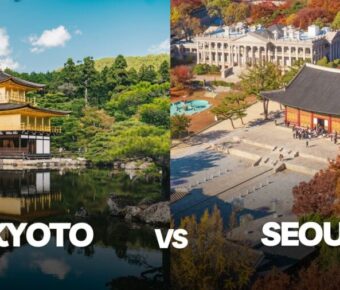
Lucca vs Pisa: Which Historic Tuscan Gem Offers the Better Italian Experience?
Choosing between Lucca and Pisa is a classic travel dilemma for visitors exploring Tuscany. Both cities offer incredible glimpses into Italian history, but each has its distinct character. While Pisa draws massive crowds to its famous Leaning Tower and Field of Miracles, Lucca steals hearts with its perfectly preserved Renaissance walls and peaceful streets.
These two Tuscan gems sit just 30 minutes apart by train, making it easy to visit both. Pisa buzzes with university students and tourists snapping photos at its iconic tower. Lucca keeps things quieter, with locals cycling along its tree-lined walls and visitors getting lost in its maze of medieval lanes.
Contents
- Historical Significance
- Origins and Founding
- Key Historical Events
- Cultural Comparison
- Architectural Distinctions
- Arts and Museums
- Culinary Scene
- Restaurants and Dining
- Signature Dishes
- Modern-Day Experience
- Atmosphere and Lifestyle
- Day and Night Entertainment
- Travel Practicalities
- Accommodation Options
- Navigating the City
- Shopping and Commerce
- Local Markets and Boutiques
- Handcrafted Goods and Souvenirs
- Frequently Asked Questions
- What unique experiences can tourists expect when visiting Lucca and Pisa on a cruise port stop?
- In planning a trip that includes Lucca and Pisa, what are the top local attractions travelers should not miss?
- Can visitors find accommodation that offers convenient access to major sights in both Lucca and Pisa?
- What beach options are available near Lucca and Pisa for those interested in exploring the coastal areas?
- What are the logistics of arranging a day tour to Lucca and Pisa from Florence, and what should participants anticipate?
- Are there efficient travel options for tourists exploring the regions from Lucca to Florence?
- More Travel Guides
Historical Significance
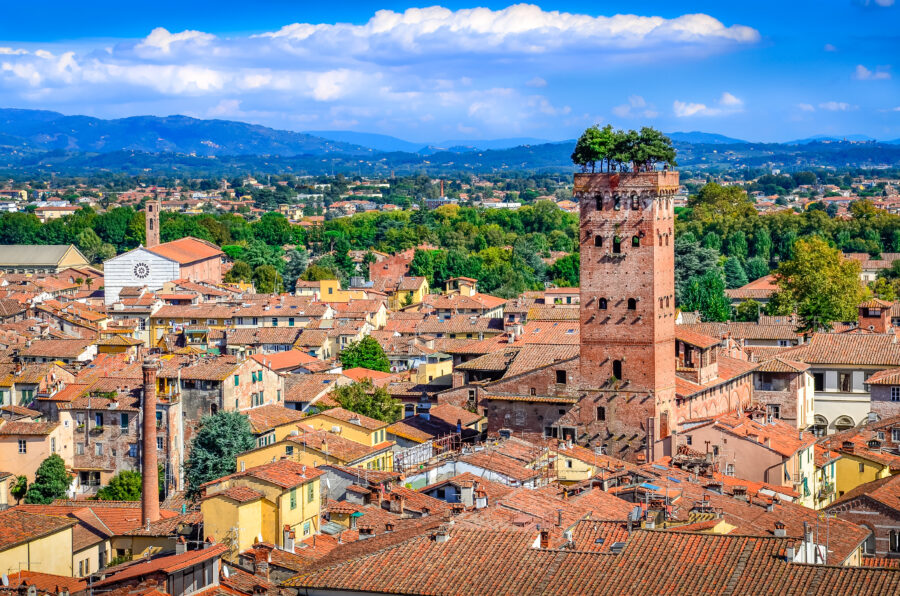
Lucca and Pisa significantly shaped Tuscany’s medieval landscape through their wealth, power, and architectural achievements. These cities built impressive towers and monuments that still captivate visitors today.
Origins and Founding

Lucca emerged as a Roman colony in 180 BCE, marked by its distinctive grid layout and oval-shaped Piazza dell’Anfiteatro. The city gained importance during the silk trade era, becoming one of Europe’s main silk-producing centers.
Pisa’s roots trace back to an ancient Etruscan settlement. In the 11th century, the city became a powerful maritime republic. Its strategic location near the coast made it a crucial Mediterranean trading hub.
Key Historical Events
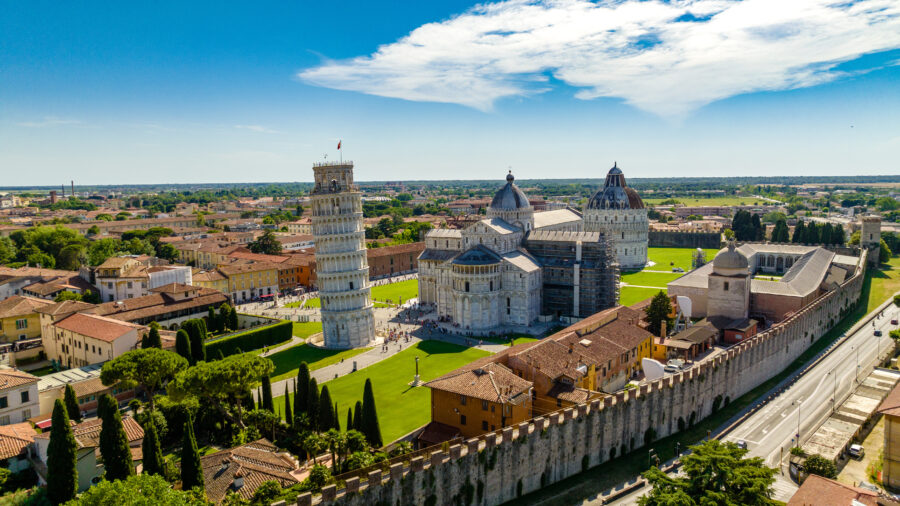
Pisa reached its golden age between the 11th and 13th centuries. The city’s naval power and trade wealth funded the construction of the famous Campo dei Miracoli, including the Leaning Tower.
Lucca maintained independence when many other Tuscan cities fell under Florence’s control. The city’s massive Renaissance walls, built in the 16th century, remain intact.
The rivalry between these cities led to numerous conflicts. Pisa suffered a significant defeat against Florence in 1406, losing its independence. Lucca, in contrast, stayed free until Napoleon arrived in 1799.
Both cities saw intense competition in tower building. Wealthy families constructed these structures as symbols of power and prestige. While many towers were destroyed over time, surviving examples like Pisa’s Torre Pendente and Lucca’s Guinigi Tower showcase this architectural arms race.
See Related: Florence vs Lucca: Which Historic Tuscan City Should You Visit?
Cultural Comparison

The two Tuscan cities showcase distinct cultural identities shaped by their unique histories. Pisa’s maritime heritage and university legacy contrast Lucca’s preserved medieval character and musical traditions.
Architectural Distinctions
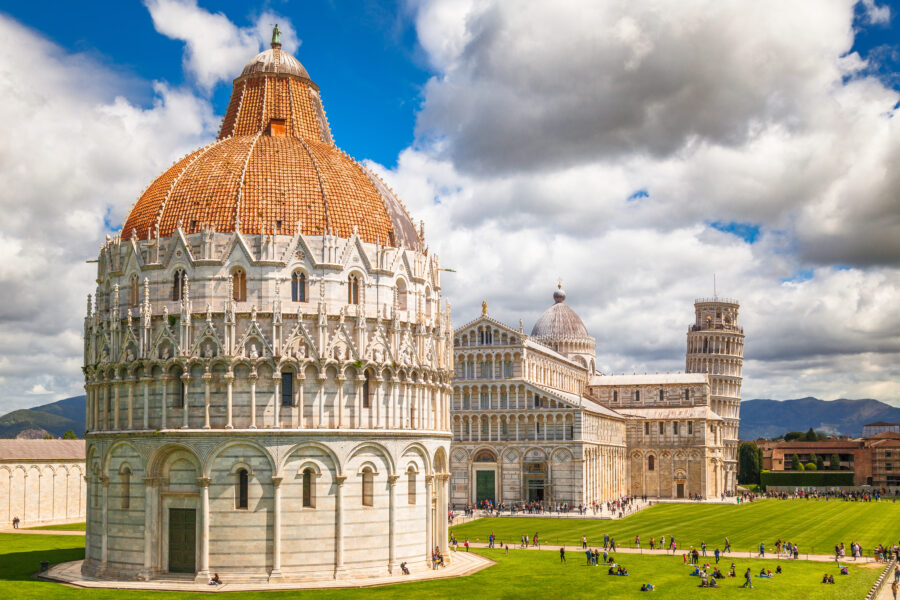
The Field of Miracles in Pisa is one of Italy’s most remarkable architectural complexes. The famous Leaning Tower draws millions of visitors yearly, while the adjacent Pisa Cathedral showcases stunning Pisan-Romanesque design.
Lucca’s architecture tells a different story through its fully intact Renaissance walls, which now serve as a popular walking and cycling path around the city.
The streets of Lucca feature elegant palazzos and the round Piazza dell’Anfiteatro, built on the ruins of an ancient Roman amphitheater. The city’s churches display intricate marble facades and unique architectural details.
Arts and Museums
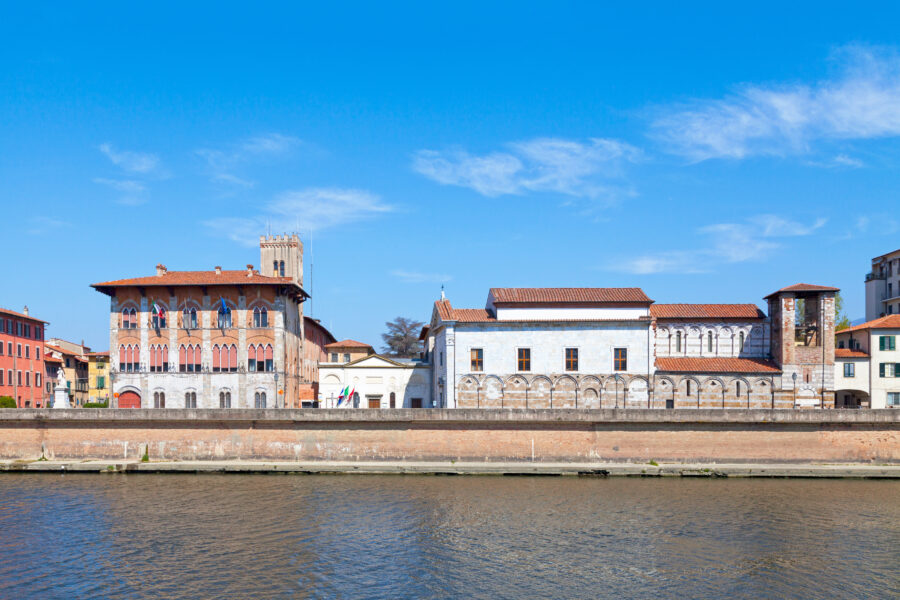
Pisa’s cultural scene centers around its historic university. The Palazzo Blu hosts major art exhibitions and showcases the city’s maritime art collection.
Lucca earned fame as the birthplace of composer Giacomo Puccini. Music fans can visit his home museum and attend year-round opera performances at the Teatro del Giglio.
The National Museum of San Matteo in Pisa houses medieval masterpieces and sacred art. Meanwhile, Lucca’s smaller museums, like Palazzo Mansi, offer intimate looks at noble life through preserved furnishings and artwork.
Both cities host festivals celebrating their artistic heritage. Pisa’s Luminara festival lights up the Arno River, while Lucca Comics & Games attracts pop culture fans across Europe.
Culinary Scene
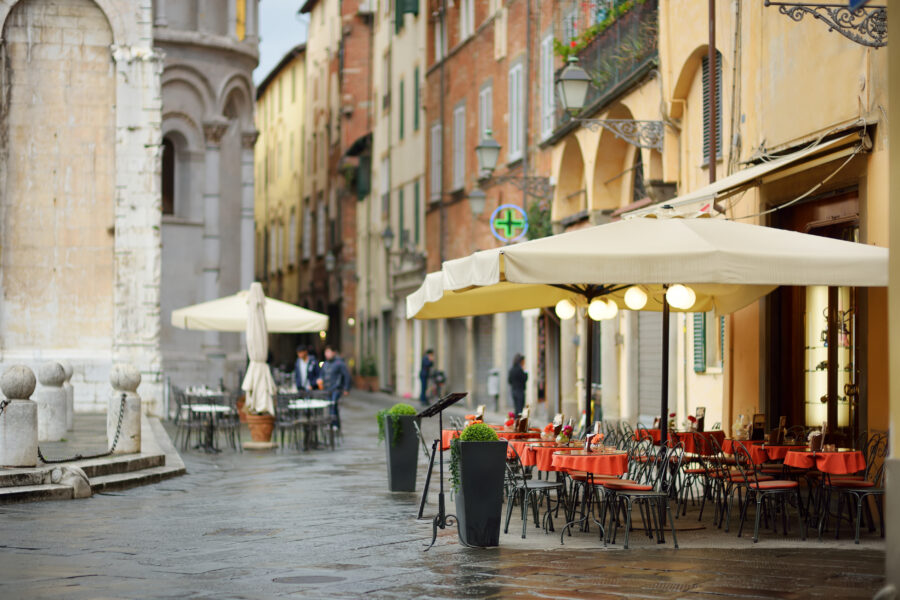
The food scenes in Pisa and Lucca showcase the diverse flavors of Tuscany. Each city offers its distinct specialties and dining experiences. Pisa offers fresh seafood from the coast, while Lucca serves hearty inland dishes.
Restaurants and Dining
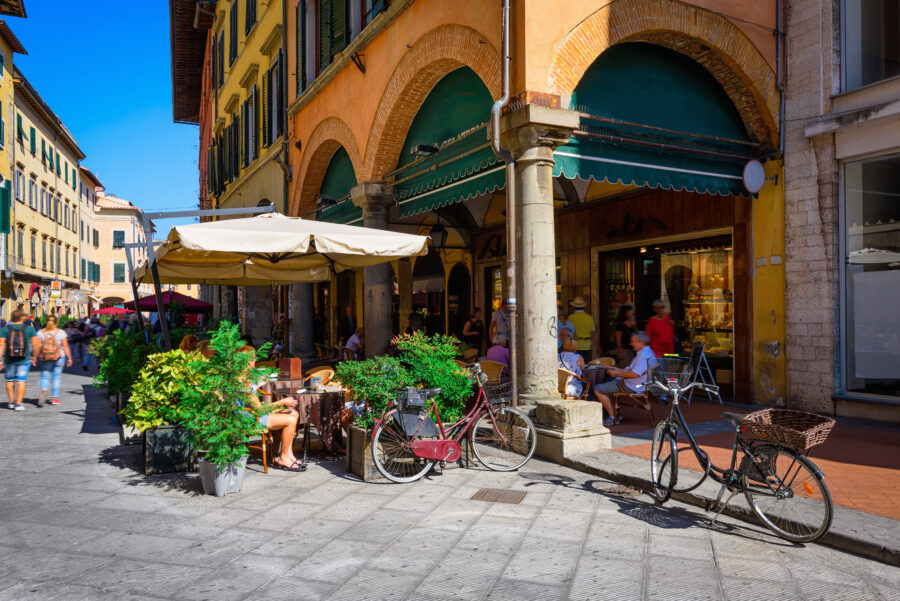
Pisa’s restaurants cluster around the historic center and along the Arno River. Many eateries focus on fresh catches of the day, with outdoor seating perfect for people-watching near the famous tower.
Lucca’s dining spots hide within the medieval walls, tucked into cozy side streets and historic piazzas. Small family-run trattorias serve traditional Tuscan cuisine in intimate settings.
The price range varies widely in both cities. Pisa tends to charge more in tourist areas near the Tower, while Lucca offers better value at local spots away from the main squares.
Signature Dishes

Pisa’s coastal location shines through its seafood specialties. Spaghetti con le arselle (spaghetti with clams) and stuffed mussels are local favorites. The city’s unique cecina, a crispy chickpea pancake, makes a perfect street food snack.
Lucca’s inland cuisine features heartier fare. Local specialties include:
- Tordelli lucchesi (meat-filled pasta with meat sauce)
- Buccellato (sweet bread with raisins)
- Farro soup made from ancient grains grown in nearby hills
Traditional polenta dishes appear on menus throughout Lucca, often topped with wild boar sauce or local mushrooms. Both cities serve excellent Tuscan wines from nearby vineyards.
Modern-Day Experience

Visiting these two Tuscan cities offers distinct vibes and experiences that shape how travelers spend their time. Each place brings its charm and character to life in unique ways.
Atmosphere and Lifestyle
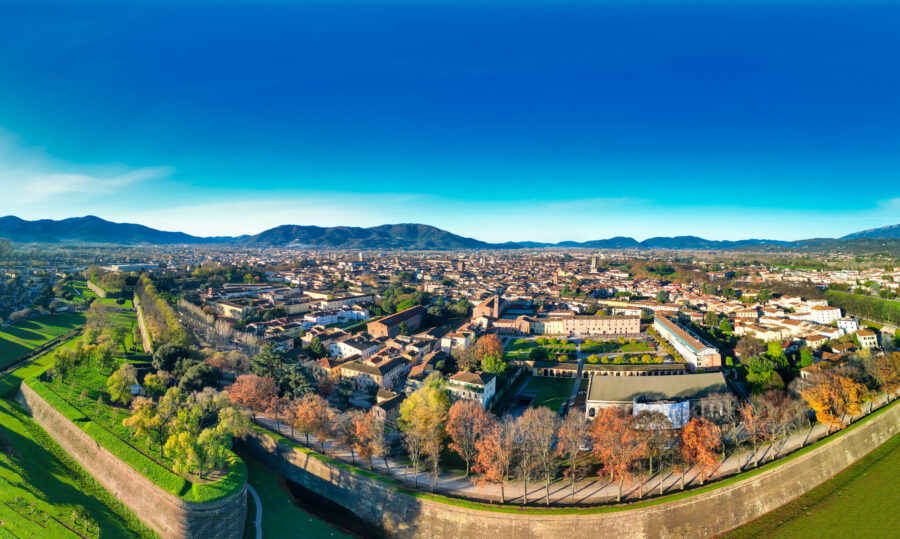
Lucca’s peaceful walled city creates a calm, local feel. The ancient walls now serve as a 4-kilometer walking and biking path where families and visitors gather. Its cobblestone streets remain quiet and authentic, with fewer tourist crowds.
Shops and cafes in Lucca stay open throughout the day, keeping the streets lively. Residents go about daily routines, giving the city a genuine Italian atmosphere.
Pisa gets busier near its famous tower, with many day-trippers filling the streets. The city feels more energetic and tourist-focused in its central areas.
Aside from the main attractions, Pisa also showcases its university town character. Students fill the streets and cafes, creating a youthful energy.
Day and Night Entertainment
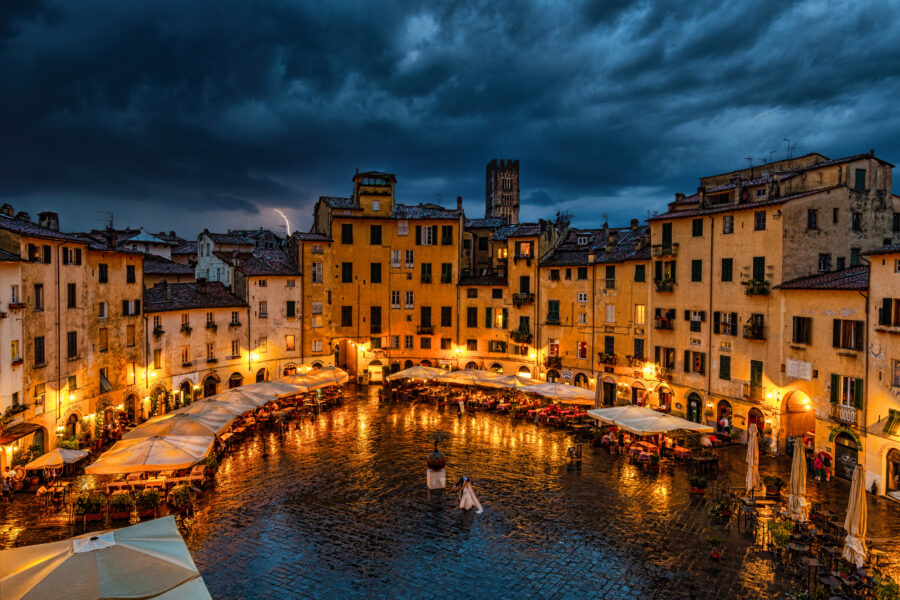
Lucca shines with its cultural events, music festivals, and concerts. During summer evenings, the city hosts outdoor performances in its piazzas. Small wine bars and traditional restaurants stay open late.
Street musicians often perform in Lucca’s squares. Art galleries and craft shops welcome visitors throughout the day.
Pisa offers more modern entertainment choices. Its student population supports a variety of bars and clubs that stay open late.
Pisa’s seafront area features beach clubs and seaside restaurants. Evening walks along the Arno River show the city’s romantic side.
Both cities host outdoor markets where locals sell fresh produce and crafts. Food tours and wine tasting experiences let visitors sample regional specialties.
See Related: Florence vs Pisa: Which Historic Tuscan City Offers the Better Italian Experience?
Travel Practicalities
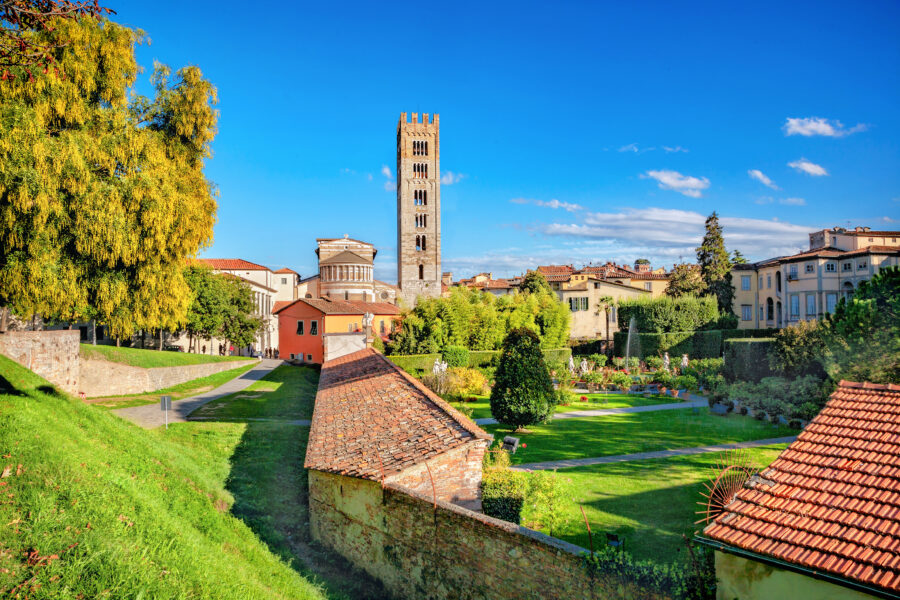
Getting around both cities and finding places to stay requires different strategies, as each has a unique layout and tourist infrastructure.
Accommodation Options
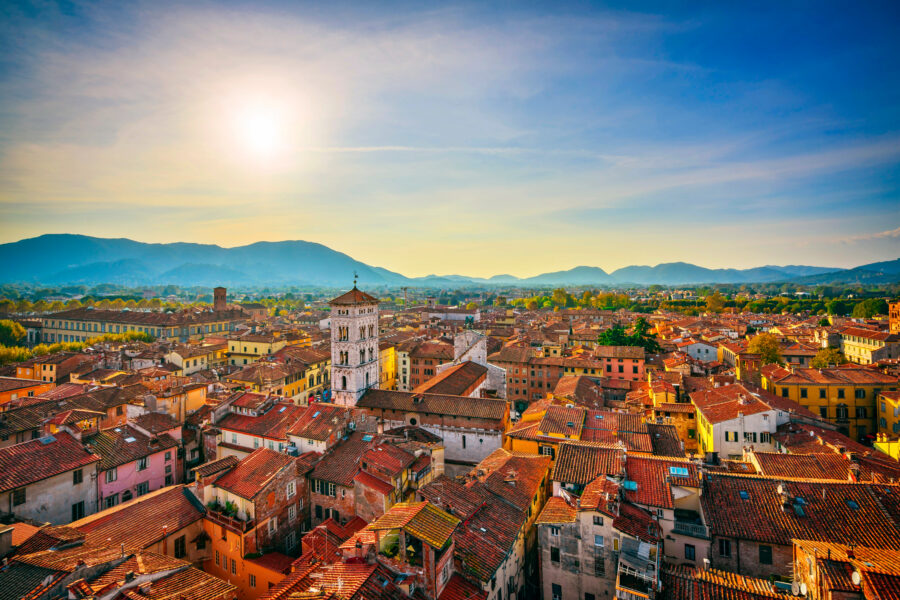
Both cities offer distinct lodging experiences. Lucca’s old town features charming boutique hotels and bed & breakfasts tucked inside historic buildings. Many visitors love staying within the ancient walls for the authentic atmosphere.
Book accommodations early during peak summer months since rooms inside Lucca’s walls fill up fast. Prices tend to be moderate compared to other Tuscan destinations.
Pisa provides more modern hotel options, especially near the train station and airport. The area around the Leaning Tower has several upscale properties with iconic views, though they command premium rates.
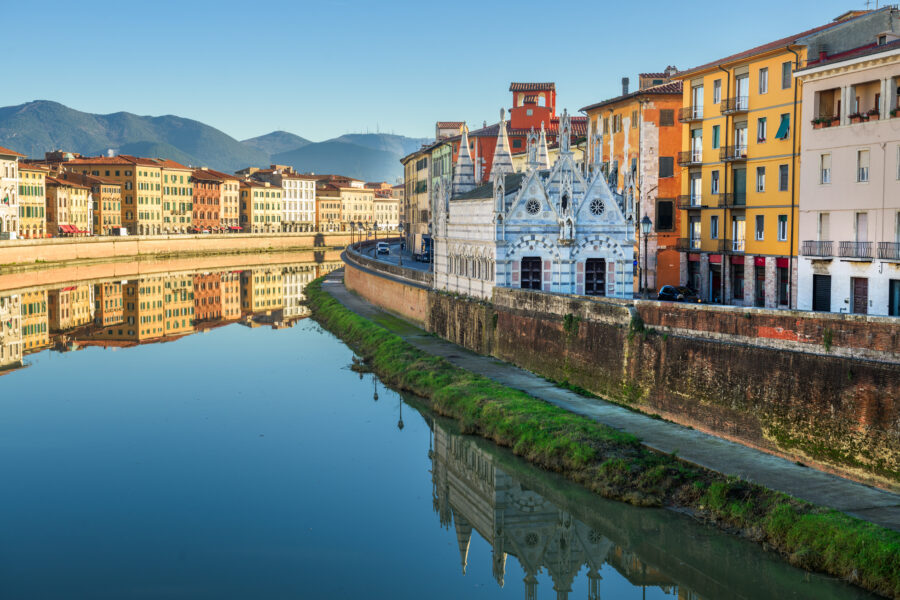
Lucca’s flat terrain and traffic-free historic center make it perfect for walking or cycling. Bikes can be rented near the wall entrances. The 4km wall circuit doubles as a scenic pedestrian promenade.
Find flights into Pisa’s international airport for easy access to both cities. Pisa is very walkable between major sights, with good bus connections to outlying areas.
Regular trains run between the two cities in 30 minutes, making either place a good home base for exploring both destinations.
Street parking is limited in both historic centers. Visitors with cars should look for hotels with dedicated parking or use peripheral lots.
Shopping and Commerce
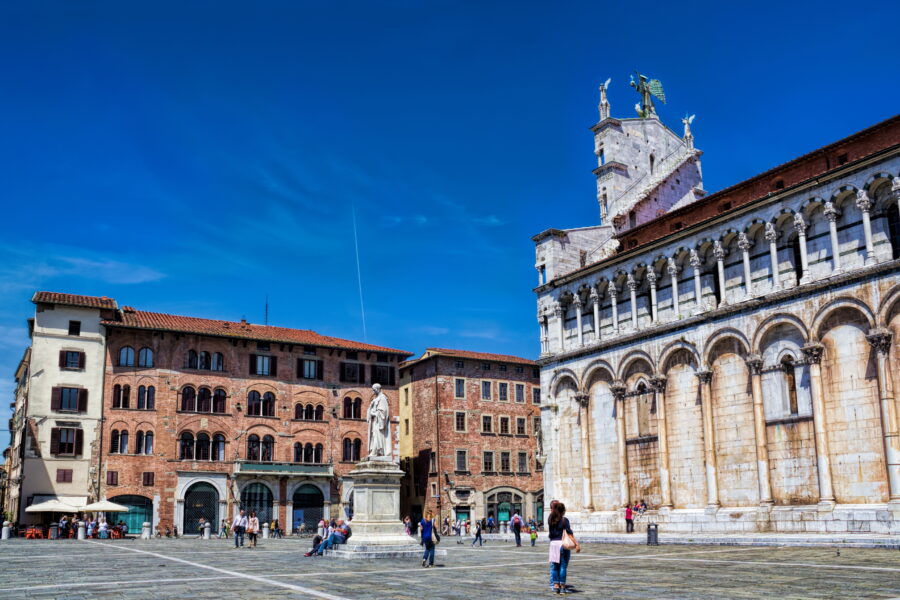
Both Lucca and Pisa offer distinct retail experiences that reflect their unique characters. Each city presents special shopping areas where visitors can find Italian goods, local specialties, and authentic souvenirs.
Local Markets and Boutiques
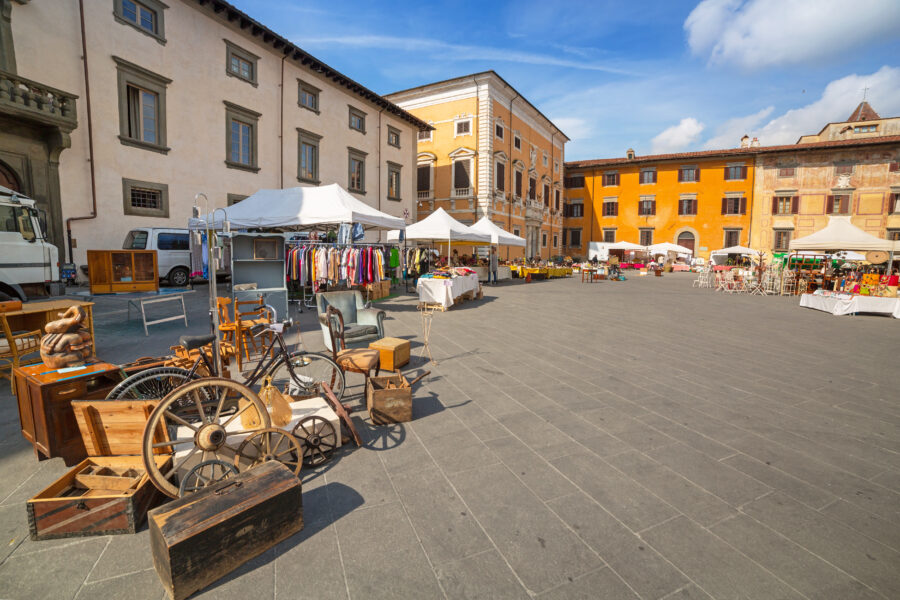
Lucca’s narrow medieval streets hide charming boutiques selling designer clothing, leather goods, and antiques. The Via Fillungo is the main shopping street, lined with Italian fashion brands and family-owned stores. The weekly market in Piazza San Michele brings local vendors selling fresh produce, cheeses, and regional specialties.
Pisa’s shopping scene centers around Borgo Stretto and Corso Italia. These elegant streets feature high-end fashion stores, bookshops, and cafes beneath historic porticoes. The Piazza delle Vettovaglie hosts a lively daily market where locals buy fresh ingredients and seasonal produce.
Handcrafted Goods and Souvenirs
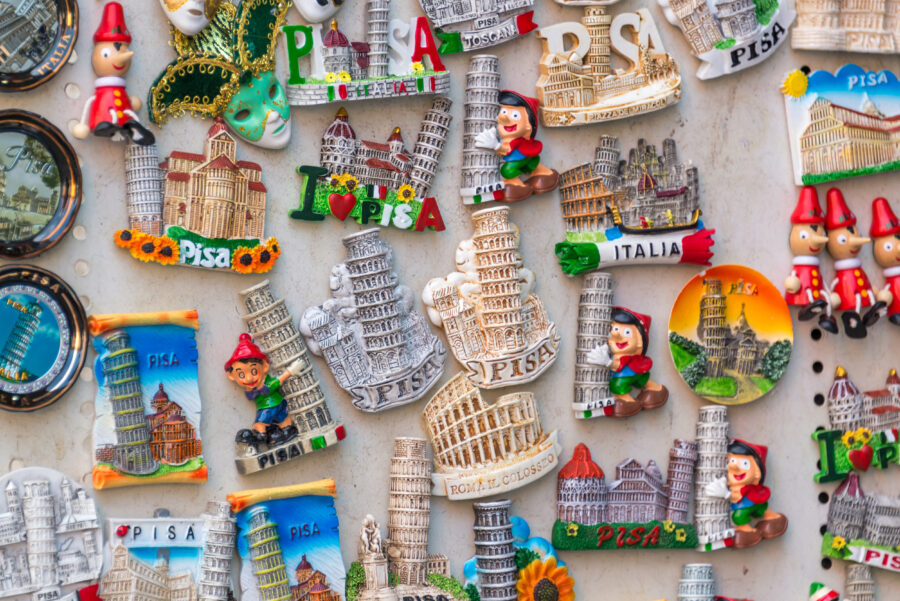
Lucca takes pride in its artisan workshops, which create unique leather items, handmade paper, and local olive oil. Many small studios along Via Santa Croce showcase traditional crafts like silk scarves and carved wooden items. Local artists sell their works in tiny galleries throughout the historic center.
In Pisa, souvenir shops cluster near the Leaning Tower, offering themed merchandise and local crafts. The city’s artisans specialize in ceramics and glasswork. Small workshops in the Santa Maria district create custom jewelry and traditional Tuscan handicrafts.
The streets around Piazza dei Miracoli feature shops selling local wines, traditional biscotti, and authentic Italian food products.
See Related: Pisa vs San Gimignano: Which Stunning Tuscan City Should You Visit First?
Frequently Asked Questions
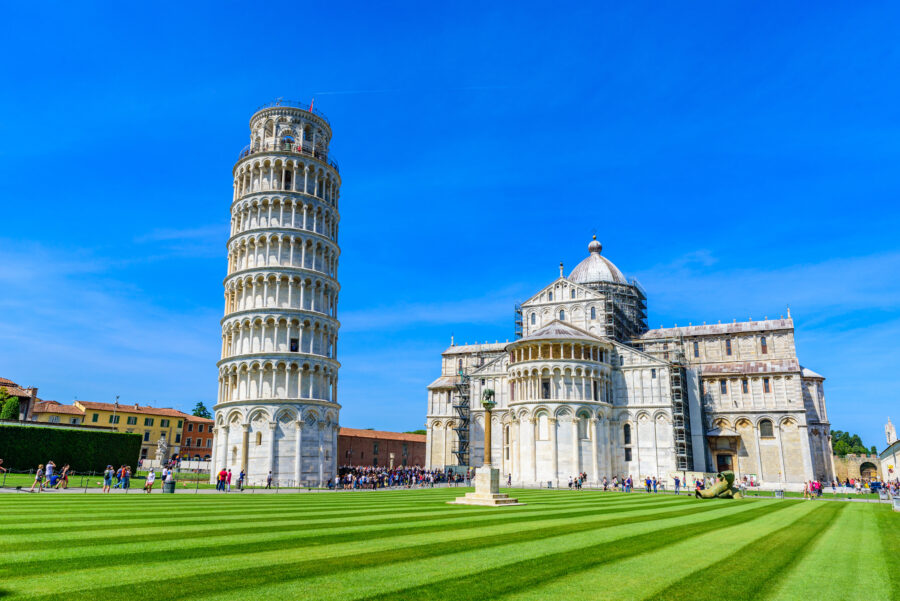
Lucca and Pisa offer unique tourist experiences, from ancient architecture to local cuisine. These historic Tuscan cities provide excellent transport links, beach access, and diverse accommodation options.
What unique experiences can tourists expect when visiting Lucca and Pisa on a cruise port stop?
Pisa’s port, Livorno, provides easy access to both cities. A half-day is enough to see Pisa’s Leaning Tower and Cathedral Square.
Lucca needs at least 4-5 hours to walk the Renaissance walls and explore the charming old town streets. The city’s compact size makes it perfect for walking tours.
Visitors can rent bikes in Lucca and ride along the tree-lined wall paths, which gives them a different perspective of the city.
In planning a trip that includes Lucca and Pisa, what are the top local attractions travelers should not miss?
In Pisa, you must see the Leaning Tower and Piazza dei Miracoli. The Baptistery and Cathedral also showcase stunning medieval architecture.
Lucca’s main attractions include the oval-shaped Piazza Anfiteatro and the unique Guinigi Tower with its rooftop garden. The San Martino Cathedral houses remarkable artwork.
The city walls of Lucca stretch 4.2 km and offer great spots for picnics and cycling. The San Michele in Foro church also displays impressive Roman architecture.
Can visitors find accommodation that offers convenient access to major sights in both Lucca and Pisa?
Both cities offer hotels within walking distance of the main attractions. Lucca’s old town also has boutique hotels in historic buildings.
Pisa provides accommodation near the Leaning Tower area. Many hotels are located along the Arno River and have easy access to transport.
Budget travelers can find hostels and B&Bs in both cities. These often include breakfast and local hosting tips.
What beach options are available near Lucca and Pisa for those interested in exploring the coastal areas?
Marina di Pisa offers pebbly beaches just 20 minutes from Pisa’s center. The area includes free public beaches and private beach clubs.
Viareggio, near Lucca, features sandy beaches with rentable umbrellas and chairs. The resort town also has a lovely promenade with shops and restaurants.
Forte dei Marmi is an upscale beach town 30 minutes from Lucca. It’s known for its pristine beaches and designer shopping.
What are the logistics of arranging a day tour to Lucca and Pisa from Florence, and what should participants anticipate?
Tours typically start early in the morning from Florence’s main station. Most visits begin in Pisa to avoid the midday crowds at the Leaning Tower.
A guided tour lasts 8-10 hours. It usually includes transport, skip-the-line tickets, and an English-speaking guide.
Small group tours offer more flexibility and personal attention. These often include time for independent exploration.
Are there efficient travel options for tourists exploring the regions from Lucca to Florence?
Direct trains run from Lucca to Florence every hour. The journey takes about 80 minutes and costs around €8.
Morning trains are less crowded than afternoon services. First-class tickets provide more comfort for minimal extra cost.
The Lucca train station is just outside the city walls. The historic center is a 10-minute walk away.
